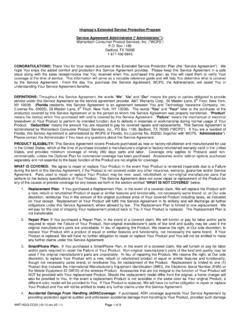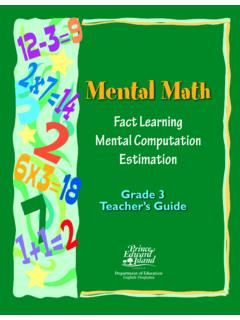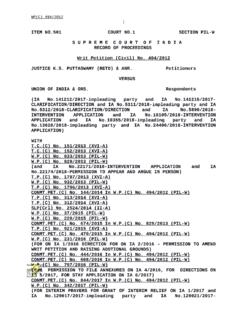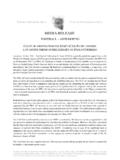Transcription of International Migrants in Developing Countries: An ...
1 Please cite this paper as: Dumont, Jean-Christophe, Spielvogel, Gilles, Widmaier, Sarah (2010), International Migrants in Developed, Emerging and Developing Countries: An Extended Profile , OECD Social, Employment and Migration Working Papers , Directorate for Employment, Labour and Social Affairs OECD Social, Employment and Migration Working Papers International Migrants in Developed, Emerging and Developing Countries: An Extended Profile Jean-Christophe Dumont, Gilles Spielvogel and Sarah Widmaier 114 Unclassified DELSA/ELSA/WD/SEM(2010)14 Organisation de Coop ration et de D veloppement conomiques Organisation for Economic Co-operation and Development 15-Dec-2010 _____ English - Or.
2 English DIRECTORATE FOR EMPLOYMENT, LABOUR AND SOCIAL AFFAIRS EMPLOYMENT, LABOUR AND SOCIAL AFFAIRS COMMITTEE OECD SOCIAL, EMPLOYMENT AND MIGRATION PAPERS, NO. 114 International Migrants IN DEVELOPED, EMERGING AND Developing COUNTRIES: AN EXTENDED PROFILE Jean-Christophe Dumont, Gilles Spielvogel and Sarah Widmaier J61, J24, O15, F22, I23 JT03294477 Document complet disponible sur OLIS dans son format d'origine Complete document available on OLIS in its original format DELSA/ELSA/WD/SEM(2010)14 Unclassified English - Or. English Cancels & replaces the same document of 23 November 2010 DELSA/ELSA/WD/SEM(2010)14 2 DIRECTORATE FOR EMPLOYMENT, LABOUR AND SOCIAL AFFAIRS OECD SOCIAL, EMPLOYMENT AND MIGRATION WORKING PAPERS This series is designed to make available to a wider readership selected labour market, social policy and migration studies prepared for use within the OECD.
3 Authorship is usually collective, but principal writers are named. The papers are generally available only in their original language English or French with a summary in the other. Comment on the series is welcome, and should be sent to the Directorate for Employment, Labour and Social Affairs, 2, rue Andr -Pascal, 75775 PARIS CEDEX 16, France. The opinions expressed and arguments employed here are the responsibility of the author(s) and do not necessarily reflect those of the OECD. Applications for permission to reproduce or translate all or part of this material should be made to: Head of Publications Service OECD 2, rue Andr -Pascal 75775 Paris, CEDEX 16 France Copyright OECD 2010 DELSA/ELSA/WD/SEM(2010)14 3 ACKNOWLEDGEMENT This paper was written by Jean-Christophe Dumont (OECD, Gilles Spielvogel (University Paris 1 Panth on-Sorbonne, and Sarah Widmaier (OECD, The authors would like to thank Maria Carolina Alban (OECD) for statistical assistance and especially a lar zden (World Bank) for his support and valuable comments.)))
4 The underlying database DIOC-E was compiled as the result of a joint effort by the OECD, the Development Research Group of the World Bank and the Research Department of the Agence Fran aise de D veloppement and benefited from a special contribution from Afristat. This project has been supported by the Research Department of the Agence Fran aise de D veloppement. DELSA/ELSA/WD/SEM(2010)14 4 TABLE OF CONTENTS ABSTRACT .. 5 R SUM .. 6 International Migrants IN DEVELOPED, EMERGING AND Developing COUNTRIES: AN EXTENDED PROFILE .. 7 Introduction .. 7 Main findings .. 8 1. An extended bilateral database of International Migrants : DIOC-E.
5 9 2. An overview of worldwide migration circa 2000 based on DIOC-E .. 15 Immigrant populations by countries of residence: size and characteristics .. 15 The perspective of origin countries: emigrants and their characteristics .. 21 3. New emigration rates and brain drain estimates .. 25 4. Determinants of highly skilled migration: unilateral and bilateral estimates .. 30 Unilateral estimates .. 30 Bilateral estimates .. 33 Conclusion .. 39 REFERENCES .. 40 DELSA/ELSA/WD/SEM(2010)14 5 ABSTRACT Increasing International mobility makes International comparable data even more important, to depict global migration patterns and its characteristics, not only in receiving countries but also in origin countries.
6 This paper provides a detailed picture of immigrant and emigrant populations around the year 2000 based on the new global bilateral migration database DIOC-E. DIOC-E gives the opportunity to investigate various aspects of South-South migration and to make reliable comparisons with South-North migration. In particular, emigration rates for different skill levels can be computed, including many key destination countries outside the OECD area, based on more accurate education data in origin countries. This refines and challenges previous conclusions regarding the relative importance of migration in different regions of the world, main characteristics of emigrants, and sheds light on such key issues as the gender dimension of International migration and the selectivity of migration flows.
7 DIOC-E (release ) covers 89 destination countries, of which 61 are outside the OECD area. It includes information on 110 million Migrants aged 15 and over by skill level, age, gender and labour market outcomes, which represents around 72% of the estimated number of International Migrants worldwide. In total there are million low-skilled Migrants ( ), million Migrants with intermediate skill level (35%) and 23 million highly skilled Migrants ( ). Although low-skilled migration still dominates in absolute terms both to the OECD and to non-OECD countries, emigration rates for highly skilled persons exceed total emigration rates in all regions, which reflect the selective nature of migration.
8 The econometric analyses of bilateral determinants of migration of the high-skilled distinguish South-North and South-South migration. Regarding migration to OECD countries, the relationship between the emigration rate of the highly skilled and the income level of origin countries follows an inverted U-shape relationship. But this is not the case for migration to non-OECD countries. Both total and high-skilled emigration rates to non-OECD countries steadily increase as the level of income of the origin countries decreases. Keywords: International migration, database, DIOC-E, DIOC, migrant stocks, emigration rates, skills, education, immigrants, emigrants, development DELSA/ELSA/WD/SEM(2010)14 6 R SUM La croissance de la mobilit internationale souligne l importance de donn es internationales comparables pour d crire la migration mondiale et ses caract ristiques, non seulement dans les pays de destination mais aussi dans les pays d origine.
9 Ce document donne une image d taill e des populations migr e et immigr e dans les ann es 2000 partir de la nouvelle base de donn es bilat rale mondiale DIOC-E. DIOC-E offre la possibilit d tudier diff rents aspects de la migration sud-sud et de r aliser des comparaisons fiables avec la migration sud-nord. En particulier, des donn es fiables dans les pays d origine permettent de calculer des taux d expatriation par niveaux d ducation en incluant les grands pays de destination hors de la zone OCDE. Cela remet en question des conclusions tablies pr c demment sur l importance relative de la migration dans diff rentes r gions du monde, affine les caract ristiques principales des migr s et donne un clairage sur des questions cl s comme la dimension genre de la migration internationale et la s lectivit des mouvements migratoires.
10 DIOC-E (release ) contient des donn es pour 89 pays de destination, dont 61 sont en dehors de la zone OCDE. La base de donn es contient des informations par niveaux d ducation, ge, genre et des r sultats sur le march du travail pour 110 millions de Migrants g s de 15 ans et plus, soit environ 72% de l estimation mondiale des Migrants internationaux. Au total, millions de Migrants ( ) sont faiblement qualifi s, millions (35%) ont un niveau d ducation interm diaire et 23 millions ( ) sont hautement qualifi s. Bien que la migration faiblement qualifi e pr domine en termes absolus, tant vers les pays de l OCDE que vers les pays non-OCDE, les taux d expatriation des Migrants hautement qualifi s d passent les taux d expatriation globaux dans toutes les r gions, refl tant ainsi la s lectivit de la migration.
















